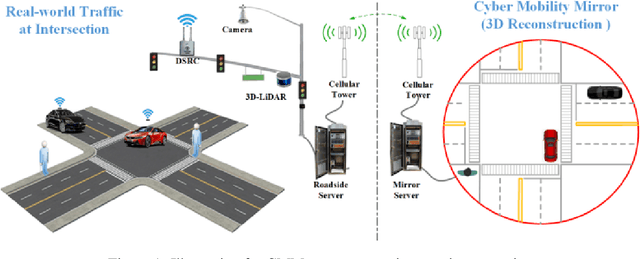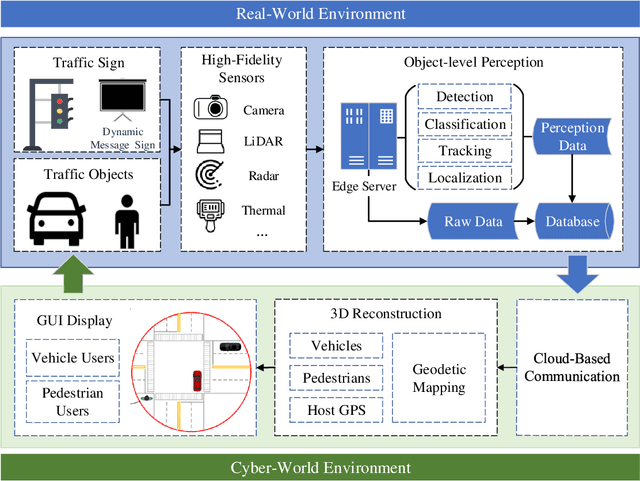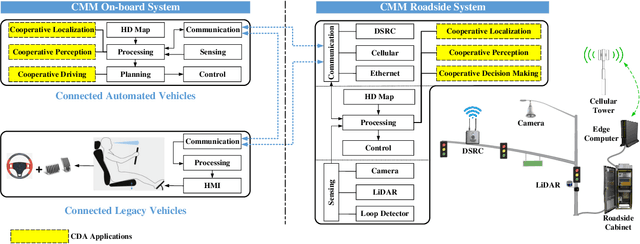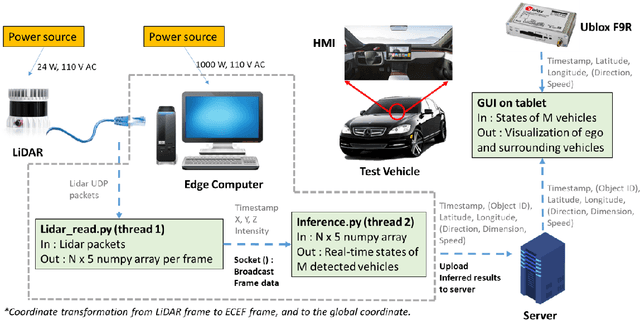Saswat Priyadarshi Nayak
The Role of Integrity Monitoring in Connected and Automated Vehicles: Current State-of-Practice and Future Directions
Feb 07, 2025Abstract:Connected and Automated Vehicle (CAV) research has gained traction in the last decade due to significant advancements in perception, navigation, communication, and control functions. Accurate and reliable position information is needed to meet the requirements of CAV applications, especially when safety is concerned. With the advent of various perception sensors (e.g. camera, LiDAR, etc.), the vehicular positioning system has improved both in accuracy and robustness. Vehicle-to-Vehicle (V2V) and Vehicle-to-Infrastructure (V2I) based cooperative positioning can improve the accuracy of the position estimates, but the integrity risks involved in multi-sensor fusion in a cooperative environment have not yet been fully explored. This paper reviews existing research in the field of positioning Integrity Monitoring (IM) and identifies various research gaps. Particular attention has been placed on identifying research that highlights cooperative IM methods. This analysis helps pave the way for the development of new IM frameworks for cooperative positioning solutions in the future.
Cyber Mobility Mirror: A Deep Learning-based Real-World Object Perception Platform Using Roadside LiDAR
Apr 07, 2022



Abstract:Object perception plays a fundamental role in Cooperative Driving Automation (CDA) which is regarded as a revolutionary promoter for the next-generation transportation systems. However, the vehicle-based perception may suffer from the limited sensing range and occlusion as well as low penetration rates in connectivity. In this paper, we propose Cyber Mobility Mirror (CMM), a next-generation real-time traffic surveillance system for 3D object perception and reconstruction, to explore the potential of roadside sensors for enabling CDA in the real world. The CMM system consists of six main components: 1) the data pre-processor to retrieve and preprocess the raw data; 2) the roadside 3D object detector to generate 3D detection results; 3) the multi-object tracker to identify detected objects; 4) the global locator to map positioning information from the LiDAR coordinate to geographic coordinate using coordinate transformation; 5) the cloud-based communicator to transmit perception information from roadside sensors to equipped vehicles, and 6) the onboard advisor to reconstruct and display the real-time traffic conditions via Graphical User Interface (GUI). In this study, a field-operational system is deployed at a real-world intersection, University Avenue and Iowa Avenue in Riverside, California to assess the feasibility and performance of our CMM system. Results from field tests demonstrate that our CMM prototype system can provide satisfactory perception performance with 96.99% precision and 83.62% recall. High-fidelity real-time traffic conditions (at the object level) can be geo-localized with an average error of 0.14m and displayed on the GUI of the equipped vehicle with a frequency of 3-4 Hz.
 Add to Chrome
Add to Chrome Add to Firefox
Add to Firefox Add to Edge
Add to Edge